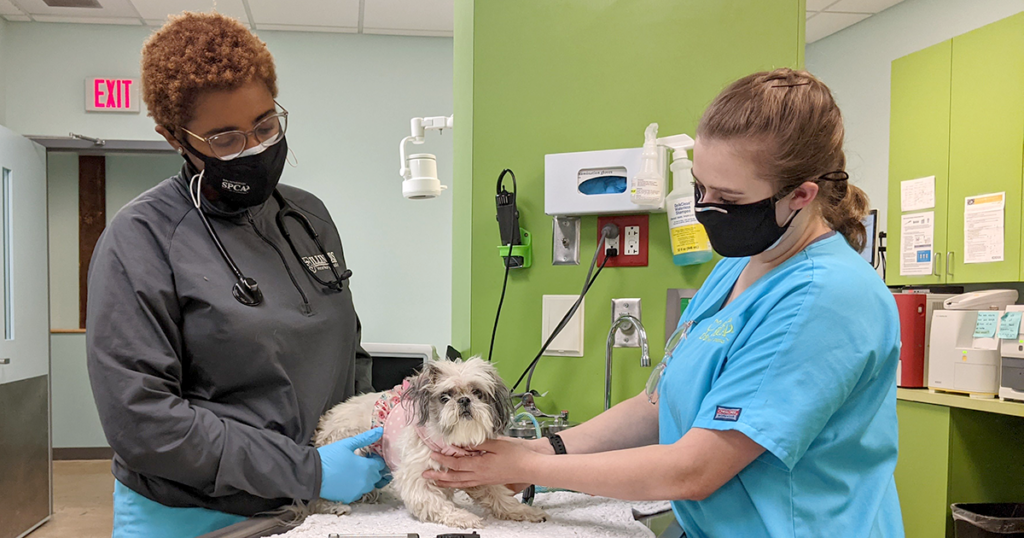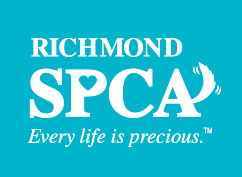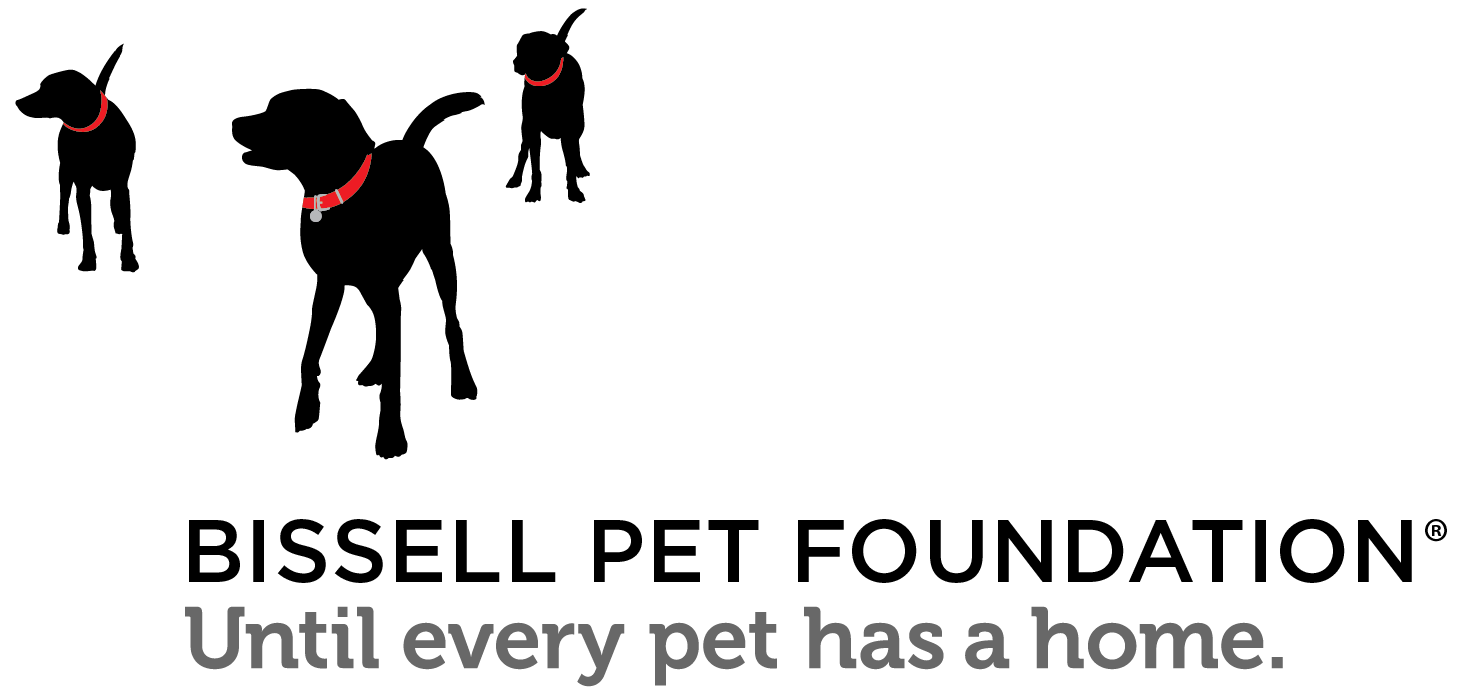Celebrating Black history-makers in animal welfare: Dr. Brit’nee Haskins

Black history is being made all around us every day, and we want to show our gratitude to our Black colleagues who are making a difference for animals and the people who love them. In celebration of the many historic accomplishments in the field of animal welfare by members of the Black community, we want to introduce you to Dr. Brit’nee Haskins, who serves as an associate veterinarian at Smoky’s Spay & Neuter Clinic and in the Susan M. Markel Veterinary Hospital.
Many thanks to our fundraising events specialist, Janae Jones, for suggesting the idea to honor and recognize Black history-makers and their contributions to our field during Black History Month.
Growing up as Brit’nee before she became Dr. Haskins

Dr. Brit’nee Haskins describes her exposure and love of animals as “ingrained” – her mother, who had Dr. Haskins as a teenager, frequently volunteered at local horse farms, and their family always had pet dogs and cats at home.
Dr. Haskins is incredibly determined and motivated – she was raised by her grandparents, she applied to boarding school for her high school years and she received a full scholarship to Davidson College in Davidson, North Carolina. She didn’t fully commit her life to caring for other people’s animals until halfway through college at age 20.
At Davidson, she began working toward a degree in anthropology, with plans to become a museum curator or a forensic anthropologist – putting her love of science, the arts, people and culture to work. But just before her junior year of college, she came to a crossroads. She realized that if she really thought about where her passions were – she wanted to be a veterinarian.
This shift in her focus meant quite a change in her class schedule. To keep her scholarship, Dr. Haskins continued her anthropology major but took on additional classes to prepare her for veterinary school. Dr. Haskins graduated from Davidson in 2011 with a degree in anthropology, and then moved to Richmond where she began to take classes at Virginia Commonwealth University to continue her prerequisite coursework for veterinary school. While she was enrolled at VCU, Dr. Haskins accepted a position at the Richmond SPCA as a client service representative and, soon after, as a veterinary assistant at the Clinic for Compassionate Care, working with Dr. Angela Ivey, our director of veterinary medicine.
During that time, she also worked closely with Dr. Rosalie Gibson. Dr. Gibson was the first person of color who Dr. Haskins had ever encountered who worked in the animal welfare field, or as a veterinarian – and at the time of meeting Dr. Gibson, Dr. Haskins was in her mid-twenties, and she says that Dr. Gibson “blew [her] mind.”
“I knew that there were doctors of color out there. [But] my primary care provider, my pediatrician – everyone in the medical field that I saw was not a person of color. So to me, [a doctor being a person of color] was completely foreign,” says Dr. Haskins. “It wasn’t a set path. It was like I was trekking through the forest, and I was making this path because I didn’t see anything else. … I had no one to talk to about me being a vet. … Thank God I went through this in a time when there was internet! There were definitely no ‘six degrees of separation’ – there were a hundred.
“Thankfully my family was so emotionally supportive … and I do feel beyond blessed and loved by them, but I know for them it was scary, too. They knew that I’d be fine but they didn’t really know what I was doing.”
Being “othered” and experiencing microaggressions in academic settings
In academic situations, Dr. Haskins often found herself as one of very few people of color. Both her boarding school and Davidson College were made up of predominantly white student bodies, and she was the only Black student in her class at the University of Illinois Urbana-Champaign’s College of Veterinary Medicine. While for once she wasn’t confused for another Black woman – a microaggression she’d experienced in other settings – Dr. Haskins explains, “Not only do you have the pressures of school, but you also have the pressure of being the only Black person in your class. Thankfully, there was one Black girl two classes above me – [but there was] no one [in subsequent classes] for a couple of years.” Less than 10% of her graduating class were students of color.
Microaggressions are defined as “indirect, subtle, or unintentional discrimination against members of a marginalized group.” Dr. Haskins explains microaggressions as “little things that poke you and poke you and poke you.” The lack of diversity in school exacerbated the microaggressions that Dr. Haskins faced. In veterinary school, she experienced assumptions about how because she was Black, she must know and relate to certain things that a person of color would relate to simply because of their race.
She was warned by multiple people that neighboring towns where she attended veterinary school were considered “sundown town” – towns where you don’t want to be by yourself after dark, for your own safety. She recalls a time while on the way to meet her friends when she ran out of gas – “the only time I’ve ever ran out of gas!” – and a white woman stopped to offer her a ride to a gas station that was in sight. Nearly holding her breath the entire time (and making an escape plan to roll out of the passenger door if anything went awry) Dr. Haskins got the gas she needed for her car, but the lady wouldn’t take her back to her vehicle until she took a picture of Dr. Haskins. The lady posted it to Instagram with a caption describing how “this Black girl” was her “charity for the month.”

While there weren’t many professors or surgeons of color at the University of Illinois, there were a few. Dr. Haskins says, “There was an unspoken, ‘I’m here for you. I’m not going to treat you special, but I’m here for you … and I see you.'”
Dr. Haskins shared one example of an interaction with a Black surgeon at the University of Illinois, which centered around hair. “Little things meant a lot, like ‘I tried this new hairstyle, it stayed for a couple of weeks and I didn’t have to worry about it’ – especially when you’re going through a really hard rotation, and you barely have time to eat and sleep. [Hair] is a point of insecurity that you worry about. [I would think,] ‘Am I presentable? Is this hair presentable to you, Clinician?'”
Having her few professors of color made the experience a bit more inclusive for Dr. Haskins, which helped her through a very challenging time of being away from family in a vastly different part of the country, and through the rigorous academic pressures of veterinary school. It was like the opposite of exclusion. During those moments with her professors and surgeons, they were all just human beings.
Professional work as a Doctor of Veterinary Medicine
Dr. Haskins graduated from the University of Illinois Urbana-Champaign’s College of Veterinary Medicine in 2018 with her Doctor of Veterinary Medicine (DVM) degree. She then worked for a year as a rotating doctor at Friendship Hospital for Animals in Washington, D.C., which she described as diverse in color, race, ethnicity, gender and ability.
For the first time, she didn’t feel “othered” due to her race and gender expression. Friendship Hospital is a large full-service practice that delivers primary, emergency and specialty care, and it employs over 50 doctors.
In her highly competitive internship program, Dr. Haskins worked incredibly difficult and long days in her first year as a Doctor of Veterinary Medicine (DVM). While it was a very difficult year of work, Dr. Haskins is deeply grateful for her time with Friendship Hospital because of all the experience it offered her.

Next, Dr. Haskins sought out her first non-internship position as a veterinarian. She had stayed in touch with the team at the Richmond SPCA. She said that the passion that Dr. Ivey, Brittany Pierri (our former manager of internal veterinary services) and Katie Goodell, LVT (our current manager of internal veterinary services) exhibited while she worked with them prior to and during veterinary school inspired her to work in shelter medicine, and she knew that at some point in her career she wanted to return to the Richmond SPCA. She had seen firsthand how the Richmond SPCA had redefined what shelter medicine was – not just reactive work, but a holistic mission of helping animals and the community of people who love them.
In 2019, we were thrilled when Dr. Haskins joined the team at the Richmond SPCA’s Susan M. Markel Veterinary Hospital as an associate veterinarian. Dr. Haskins joined a team of four doctors who deliver lifesaving, affordable care and treatment to more than 10,000 animals a year who belong to families of modest means. She describes our veterinary hospital as important to the Richmond community because we provide essential care to pets loved by folks who may not have had the opportunity to visit a vet due to financial constraints.
From time to time, Dr. Haskins encounters some clients who are surprised to learn that she is their veterinarian due to the color of her skin. She recalls one time when she introduced herself to a new client as the doctor who would be working with her and her pet, and the client looked at Dr. Haskins with a blank stare. Dr. Haskins asked if the client needed more clarification or if she had any questions, and the client responded, “I’m just confused about who you are – are you a doctor? Because I’m waiting for the doctor to come in.”
But other times, Dr. Haskins’ experience is quite different.
“When I go into a client’s room, and the client is a person of color, specifically a Black person, specifically if they’re a Black woman, young or any age, it is soul lifting. Because there’s this moment of like – I can see relief in them. I can see they instantly relax. It’s very powerful to walk in and to see that,” Dr. Haskins says. “I don’t want to speak for them – I don’t know why they’re relaxing. I think I know, because if the roles were reversed, I would feel the same way. So there’s something about seeing someone who looks just like you … that you don’t have to pretend to know something, to be something.
“When it’s a Black [client], it’s just a different interaction there. A lot of times at the end of my spiel, they’ll usually comment, ‘Wow. It’s nice to see you.’ I hear that all the time. ‘It’s very nice to see you’ – and I’ve never met them before. ‘It’s truly nice to see you.’ That comment means so much. It means a lot.”
In 2022, Dr. Haskins got the opportunity to begin to transition to working four days a week as the associate veterinarian at the Richmond SPCA’s newly acquired Smoky’s Spay & Neuter Clinic, and working at the Susan M. Markel Veterinary Hospital on Fridays. The team at Smoky’s performs 20+ spay and neuter surgeries a day for community cats and pets in the care of local municipal shelters and rescue groups. She describes spaying and neutering as a “basic foundation” of shelter medicine and care, and as a preventive care tool.
Volunteer work with The Street Dog Coalition
About two years ago, Dr. Haskins got involved with the Richmond Chapter of The Street Dog Coalition, volunteering her time and skills to assist at their pop-up clinics that they host every three months in Colonial Heights. She is part of a team of volunteers who deliver vaccines to pets, as well as provide pet food, a year’s worth of flea and tick prevention, and supplies like leashes, collars and toys, all at no cost to the clients. She describes the clients who bring their pets to The Street Dog Coalition clinics as often tearfully grateful for the services that she and the volunteers provide.
“I am not of the belief that people don’t deserve pets if they don’t have money,” Dr. Haskins says. “We understand the mental health benefits of having a pet, and the companionship that they provide – and just because you can’t afford everything all the time does not mean you don’t deserve that pet. Seeing people say, ‘I found this pet off the street and I just couldn’t bear to let them go’ – and they’re trying – let’s reward that. They are working hard. They don’t know, and they want to know.”
She now volunteers as a DVM team lead for the Richmond team, alongside her co-lead Claire Tetrick, who manages logistics, scheduling and promotion of Street Dog Coalition clinics. In December, they hosted a clinic at the Richmond SPCA’s facility, and Dr. Haskins recruited many Richmond SPCA staff members who were excited to volunteer their time on the weekend to assist with the clinic.
Dr. Haskins’ philosophy: a “one health” perspective
Dr. Haskins credits each of her varied experiences as having helped her form her own philosophy as a doctor – from growing up with pets of her own, to her undergraduate study of anthropology, to her experience in veterinary school and in her internship, to her current work with the Richmond SPCA and The Street Dog Coalition. She sees her role and her work as aiding in the greater good, with a “one health” perspective.
Dr. Haskins explains the “one health” perspective as “the intersection between human health, animal health and the environment. Everything’s connected.”
She says, “My dream career is to literally work in the street, with the people there, take care of their animals, take care of them. To be able to heal them through their animal – but use their animal as a vessel for the things that they need as well. She is grateful that her colleagues, like Dr. Ivey, share and support this perspective as well.
“Most people are going to want to do what they can for their pet. So if someone’s like, ‘Hey – there’s this free clinic down the street next weekend. Bring your pet, we’ll do X, Y, Z. While you’re there, do you want to get your blood pressure checked? Do you want to connect with a social worker? Are you getting your meds filled regularly? Let’s talk about your water at your house – do you have clean water? Running water?’ That’s the kind of thing that I want to do for Richmond … because everything’s so individual, when we know that it’s all connected.
“If I can get you to recognize that, and you want to obviously take care of your pet but also want to take care of yourself because you can’t take care of your pet if you’re not here – that kind of concept. Then that would make me very happy.”
Final thoughts on diversity within animal welfare and the veterinary profession

“I think representation does wonders for the community. It builds trust, compliance – which is all I need so you don’t have to come back for the same issue that could have been resolved. Even being able to speak to someone in a way that they understand – using analogies and metaphors for something that’s a medical condition. … I think for building trust in the community, especially in a time like now where we can’t do everything for everyone [because there is so much need], being able to hear that from someone that looks like you – it weighs more. It’s like, ‘Oh, I get it. This person is not out to get me because I’m a person of color.’
“Representation [within our field] is important because it allows you to just be able to vent, or talk about your experience, or the day-to-day and not everything being about your color or ethnicity. Honestly, it’s the thing that is lacking so much in veterinary medicine – better representation across the board but specifically people of color. I was reading a study recently about who is spending the most on their pets these days. They did a race breakdown, and white people spend the most money, because more white people are the ones that have pets … but it’s because we just don’t have animals to spend money on.
“A lot of us were raised to not spend money on our animals because we’re spending money on bills or our kids. That generational wealth that we don’t have. But, if they did that study again in 50 years, people my age and younger that are Black will have tons of animals. We’re going to see more and more clients that look like us, and so we need to either employ them, accept them – but a lot of people, like me, don’t even know that it’s a thing [to work with animals].
“Vet schools have a lot to do to try and get people [of color] in. It’s a hard, [expensive] profession. … Honestly, I don’t know the solution – other than just ripping out the whole system and putting a new one in. … Vet med is going to have to look different in order to sustain itself in general. People will always have animals, but it should not be a luxury. We should not reward those that have money and not reward those that don’t. So that’s the challenge.
“And the people who can help out with that the best are the people who know what it is to have nothing. And that’s not specific to color, but people of color can relate. Being creative? Making something out of nothing? People who struggle – they know how to make something out of nothing. That’s what I find, that’s what I do every day is thinking of how can I make this work for this person, for this animal. You’re not trained to think that way in school. … If we want to be a field that represents and is all-inclusive and supportive of our love of animals, then we need to be creative.
“My work and experience with animal shelters feels like home. Other than my time at Friendship Hospital for Animals, my experience has highlighted that the employee population at shelters tends to represent the breadth and various layers and flavors of the people of society in which we live. It is the pulse of the community.
“We tend to find refuge in the shelter. My theory is that the animals in our care require our unconditional support and advocacy, and, similarly, those that are on the outskirts of the population or those that are marginalized can relate to this need and are the ones who are drawn to this line of work. A place of human and animal community bonding. A place a lot of us call home. A form of therapy. MY form of therapy.
“Even though the animals’ stay with us is temporary, they are our companions to help us through some tough times. In turn, we want to give back and continue to be there for the next animal in need. What a beautiful cycle.
“There have been several people who have selflessly helped me through my career – a few of those individuals I met at the Richmond SPCA during my journey and still to this day.”
We are so grateful to have Dr. Haskins on our team at the Richmond SPCA – her perspective, passion and skills with pet patients and clients make our team and community stronger and better. When she’s not actively delivering lifesaving veterinary medicine to pets in need and supporting the people who love them, Dr. Haskins can be found in her yard and gardening, on a run or puzzling with the help of her dogs, Mamacita and Tee, and her cat, Medici.

Gray Miller adopted her dream dog, Olive, from the Richmond SPCA in 2009. Five years later, she started her dream job at the Richmond SPCA.
Gray is our manager of employee engagement on our People Operations team. She has the privilege of supporting our 100+ employees throughout their journey with the Richmond SPCA as they save the lives of animals in need and help the people who love them.




